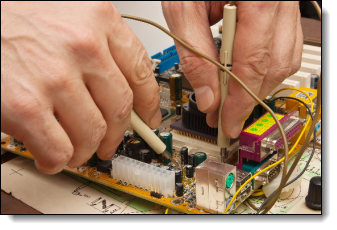The Importance of Checking Your PCB Design

The process of checking your PCB (Printed Circuit Board) design, often known as a Design Rule Check (DRC), is a critical step in the electronic design process before any prototype is manufactured. It involves a thorough review of your PCB design for potential issues that could affect its functionality, manufacturability, and reliability. Here are several reasons why this step is so crucial:
Prevention of Manufacturing Errors
Even small errors in a PCB design can lead to a complete failure of the manufactured board. These errors can often go unnoticed in the design phase without a thorough check, leading to wasted time and resources.
Design rules related to trace width, via sizes, hole drilling, and spacing are particularly critical, as violations can lead to short circuits, broken connections, or insufficient current-carrying capacity.
Cost Efficiency
Discovering a design error during the manufacturing stage or, worse, after the boards have been assembled, can be costly. It often requires re-manufacturing, which involves additional costs and time.
DRC helps in minimizing the risk of such setbacks by ensuring that the design is accurately reviewed before any physical manufacturing begins.
Time-Saving
Rectifying mistakes in already produced PCBs can cause significant delays in project time-lines. These delays can have cascading effects, especially in larger projects where various elements are interconnected.
By identifying and addressing issues in the design phase, you save time in the production cycle, helping keep the project on schedule.
Enhancing Reliability and Functionality
A PCB that hasn’t undergone a thorough check may work under test conditions but fail in the field due to overlooked stresses or use conditions. This unreliability can lead to a loss of trust in the product and potentially wider-scale consequences if the PCB is part of a critical system.
Ensuring that the design meets all electrical and physical requirements will enhance its overall functionality and reliability.
Compliance with Standards
Various industries have specific standards and regulations for electronic products (e.g., IPC standards in electronics, automotive industry standards, or medical device regulations). Failing to comply with these can lead to legal issues and barriers to market entry.
Design checks ensure that your PCB adheres to all necessary industry standards, avoiding compliance issues down the line.
Ease of Assembly
Issues like insufficient clearance between components, lack of accessibility for soldering, or incorrect component placement can make the assembly process difficult or even impossible.
A proper design check includes considerations for the assembly process, ensuring that the board can be efficiently and correctly assembled.
Facilitating Communication with Manufacturers
A design that has undergone DRC and is free of errors simplifies the communication with PCB manufacturers. It provides them with clear and accurate information, minimizing back-and-forth queries and potential misunderstandings.
This clarity can lead to faster production times and higher confidence in the final product's quality.
Future-Proofing and Scalability
A thoroughly checked design is generally more future-proof. It's more adaptable for upgrades, iterations, or increased production volumes in the future.
Ensuring your design is scalable and repeatable is especially important if the product has mass-market ambitions.
In conclusion, conducting a comprehensive check of your PCB design is an indispensable practice that significantly impacts the quality, reliability, and cost-effectiveness of your final product. It’s a step that underlines the adage: "measure twice, cut once," emphasizing the importance of thorough preparation before execution.
PCB Design Rules
PCB design rules are a set of guidelines that a designer must follow to minimize errors and improve reliability during the PCB (Printed Circuit Board) manufacturing process. These rules are established to ensure the functionality and manufacturability of PCBs, taking into account the capabilities and limitations of manufacturing facilities, as well as the operational requirements of the finished product.
To check your design use the Design Checker panel.
You can  and
and  the design rules.
the design rules.
Importing Manufacturer's Design Rules
It's typically prudent to obtain a Design Rule File or, at the very least, the specifications from your PCB manufacturer. Complying with these specifications right from the start can prevent numerous difficulties and save time since various manufacturers may have distinct capabilities and demands. AutoTRAX DEX accommodates this by allowing the import of Eagle design rules that most manufacturers, including PCBWay, commonly provide.
The Design Rules Checker tests for:
•Minimum Pad Annular Ring Size
•Minimum Via Annular Ring Size
•Courtyard to Courtyard Clearance
•Courtyard to Cutouts Clearance
•Courtyard to Border Clearance
Each test can be optionally turned on or off. All tests are on by default.